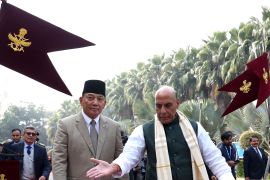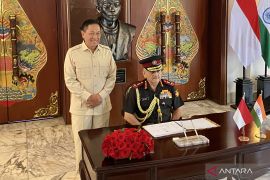Indonesias LAPAN A3 was launched together with 19 other satellites from the United States, Germany and Canada, according to a press release from the Embassy of the Republic of Indonesia to India in New Delhi received here on Thursday.
According to the embassy, the satellite launch was conducted at the Satish Dhawan Space Centre, Sriharikota, India.
The launch was witnessed by a delegation from the Indonesian National Institute of Aeronautics and Space (LAPAN), Bogor Agricultural Institute (IPB), Ministry for Economic Affairs and representatives of the Indonesian Embassy in New Delhi and the International Tech Park Chennai (ITPC).
LAPAN A3 is a micro satellite, built in collaboration with IPB and LAPAN, which functions as an earth observation tool for land use monitoring, natural resources and the environment.
The satellite is the third Indonesia-owned satellite launched with Indian rocket launchers.
Earlier, Indonesian satellite LAPAN TUBSAT was launched in 2007 and LAPAN A2 was launched in 2015.
The launch was the biggest satellite launch ever undertaken by the Indian Space Research Organization (ISRO).
Similar to the previous satellite generation (Lapan-A2/ORARI), the Lapan A3 satellite is also equipped with the Automatic Identification System (AIS) to monitor global marine traffic.
If previously the Lapan-A2 was orbiting the earth around the equator, then the Lapan-A3 is orbiting the earth across the North Pole and the South Pole of the earth (polar orbit), so it will complement the monitoring of data traffic of ships from satellites.
These satellites have a vessel monitoring mission to complement the data obtained from the Lapan A2 satellite.
With the launch of the satellite, Lapan A3 is expected to provide more accurate information as it will be orbiting Indonesia more often.
Moreover, Lapan A3s other mission is to measure the Earths magnetic field and as an experimental test mission of the new equipment developed by Indonesian Lapan engineers.
Indonesian National Institute of Aeronautics and Space began developing a satellite in 2007, with LAPAN A1 after undergoing training in Germany and then produced their own next generation LAPAN A2, which was launched in 2014.(*)
Editor: Heru Purwanto
Copyright © ANTARA 2016











